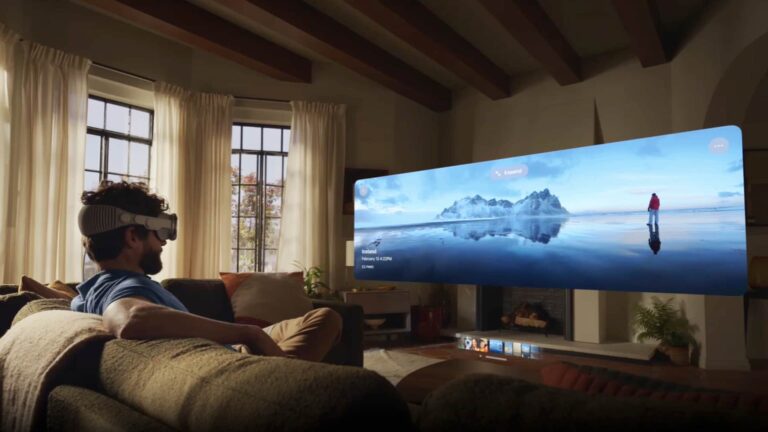
Just after the Mac’s 40th anniversary last February, Apple Vision Pro (AVP) launched. Both devices were/are first steps in a long journey. And both were/are prohibitively expensive – the original Mac weighing in even heavier in today’s inflation-adjusted dollars.
AVP’s price tag has been its biggest sticking point. But it’s the wrong thing to focus on. AVP is Apple’s way of planting a flag for a first-generation device, and to demonstrate what’s possible at any cost. Future generations will get cheaper and lighter – a typical Apple product lifecycle.
V1 can also be seen as a dev kit. Buyers will be fanboys, wealthy early adopters, and developers (‘Pro’ is in the title, after all). The latter will view it as an early-mover advantage in starting to build muscles for spatial app development – a potentially valuable skill if all goes well.
So on those levels, what is Vision Pro? Where will it go next? And how does it fit into Apple’s future-proofing plan? This is the topic of a recent ARtillery Intelligence report. As such, it joins our weekly report excerpt series, with this installation focusing on Vision Pro use cases.
Entertainment Value
One question that continues to loom over Apple Vision Pro – as with any early tech product – is what’s its main draw and primary function? This is known as a killer app, and they take years to develop as device-native thinking gradually sets in. We saw something similar with the iPhone.
Meanwhile, some directions can already be seen in the use cases that Apple has put forward. For example, entertainment will be a central use case, given AVP’s immersive capacity. This includes private immersive viewing, such as at home and in-flight entertainment.
But the main clue is entertainment’s alignment with Apple’s content and subscription businesses, pursuant to its revenue-diversification imperative. It’s also a use case that everyone can understand. That approachability is rooted in almost everything Apple releases.
Sticking with that last point, Apple – as it often does – has been waiting and watching the AR sector for the past several years and observing its mistakes. And one of the biggest mistakes has been AR’s tendency to get stuck in techy territory, including esoteric messaging and acronyms.
So when looking for killer apps to drive Vision Pro’s demand – besides sex appeal around its sheer gadgetry – an elite entertainment experience was a natural choice. And though the majority of early AVP sales are to enterprises, this is Apple’s aspirational market for the device.
Sporting Chance
Going one level deeper into entertainment use cases, one subset could be especially opportune: spectator sports. Like entertainment broadly, this has mass appeal and natural monetization which, again, aligns with Apple’s central revenue diversification goals.
There’s also a product/market fit. Immersive technology taps into the visceral and participatory nature of sports. That value is amplified where front-row seats carry a premium. It’s all about the squeaking hardwood in basketball or the sound of bodies smashing into boards in hockey.
These fan experiences were the promise of NextVR and its early work with teams like the Golden State Warriors. Apple acquired NextVR in 2020 to seed this evolutionary path. Other moves in that master plan include Apple’s broadcast rights such as MLS, MLB, and NBA.
The unit economics also work. If Apple can sell live virtual front-row seats for $9 – or bundled season passes for superfans – it could reach a sizable market. That market also scales beyond teams’ geographic constraints. There’s a massive NBA following in China for example.
For fans, this doesn’t beat attending live sporting events but it immerses them in the action for a fraction of the price, time, and effort. Both will coexist as Vision Pro augments the fan experience. It will take a while – and require lowering AVP’s price – so consider it early innings.

